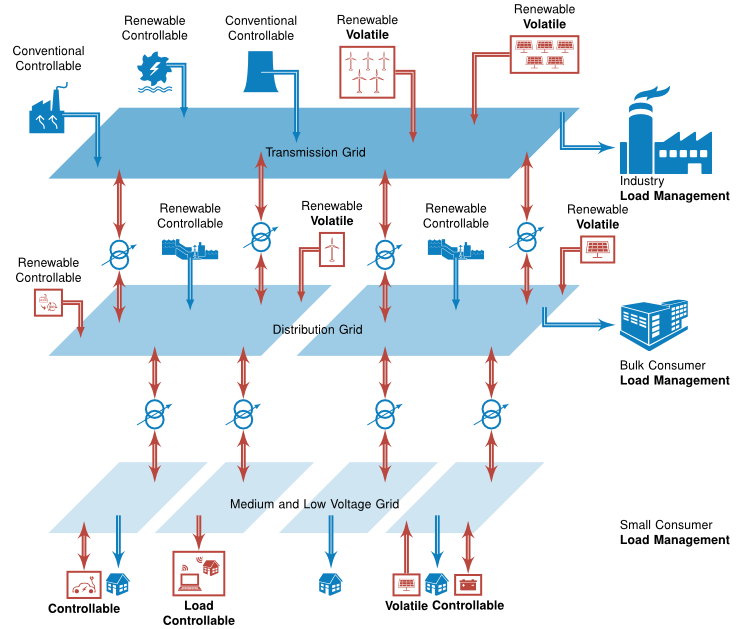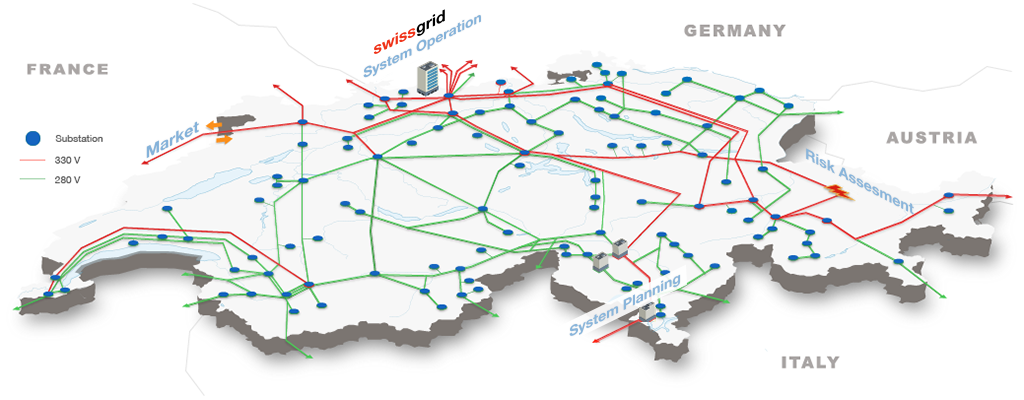Background
SCCER-FURIES (Swiss Competence Center for Energy Research – Future Swiss Electrical Infrastructure) is the Swiss national competence center mandated to develop, promote and deploy power grid-related innovative solutions toward the implementation of the Swiss Energy Strategy 2050.
The Swiss Energy Strategy 2050 encourages increasing the share of renewable energy sources (RES) to reduce the dependency on fossil and nuclear sources, alleviate global warming and ensure the long-term sustainability of our society. However, the volatility of RES represents a challenge to the fundamental power system stability. Solutions to address the volatility include network expansion, more flexible operations and the use of storage. Another key element lies in the synergies between different energy forms.
The benefit deriving from the smart operation of energy conversion and storage components is not systematically exploited in today’s energy infrastructure, neither on the regional nor on the national level. One key issue to be addressed in order to enable the global energy transition lies in the properly coordinated modification of both regional and bulk grid infrastructure, where the latter in particular is critical for increased international integration and market liberalization.
Goals
Nexus-e is mainly involved in the work package 2: Bulk Multi-Energy Grids, which focuses on the design, operation and practical market integration of the future energy system in Switzerland, while also accounting for regional and international constraints. The goals of this work package are to
- develop a model of the Swiss bulk energy system to analyze realistic and detailed representations of the Swiss system, which incorporates interactions between different energy carriers, fluctuating energy sources, storage devices, demand side management, transmission grid, spatial distribution;
- couple the technical model with the economic model of SCCER-CREST (Swiss Competence Center for Energy Research – Competence Center for Research in Energy, Society and Transition);
- validate this model on real-cases in close collaboration with SwissGrid, the Swiss transmission grid operator.
Within this work package, Nexus-e provides a detailed representation of the Swiss transmission system. Furthermore, the Cascades module is used to assess the risk of systemic failures in the future Power grid of Switzerland, analyze the impact of the weather conditions and the change in regional demand on system security, and identify sets of contingencies that contribute the most to the risk of cascading failures. Additionally, the eMark module is utilized to simulate market dispatch outcomes and assess the economic impacts of a range of market coupling options (i.e., different mixtures of NTC-based and flow-based couplings) and to compare against a nodal optimal market clearing case.



